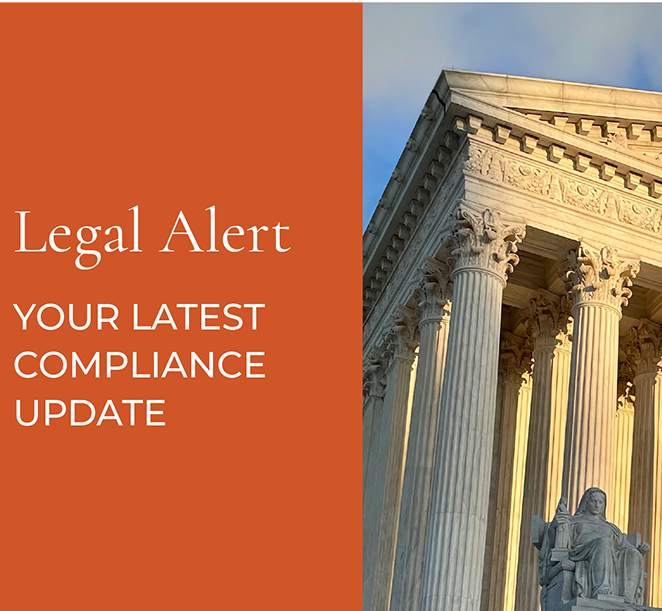Legal Alert: RxDC Reporting Due June 1
Reminder: RxDC Reporting Due June 1
With the 2023 reference year RxDC reporting deadline approaching soon, plan sponsors should familiarize themselves with recent updates to the RxDC Reporting Instructions.
As a reminder, the Consolidated Appropriations Act, 2021, includes a provision that requires group health plans and health insurance issuers (collectively “plans and issuers”) to report certain specified data related to prescription drug and other healthcare spending. The first RxDC report (for 2020 and 2021) was due on January 31, 2023, with the report for 2022 following soon thereafter on June 1, 2023. The deadline to submit reporting for calendar year 2023 is June 1, 2024 (and continues each June 1 thereafter).
In anticipation of the June 1, 2024 deadline, the agencies updated the reporting instructions. The most relevant updates are summarized below:
- Sections 4.2, 8 and 9:
- For P2, Column C, the instructions clarify how a reporting entity that is submitting data for a carved-out benefit needs to populate the field.
- Additional detail on reporting information in the prior year columns in D5 and the restated rebate columns in D6, D7 and D8.
- Corresponding instructions clarify how to represent plans in P2 when the plan contributes to the prior year and restated fields but not to the current year fields (Sections 4.2, 8 and 9).
- Section 5.6: In prior year reporting, enforcement of the aggregation restrictions preventing data in files D1 and D3-8 from being aggregated at a less granular level than the aggregation level used by the reporting entity that submitted the data in D2 Spending by Category was suspended; however, this requirement will no longer be suspended for 2023 reference year reporting.
- Section 6.1:
- Plans may now use a simplified calculation of average monthly premium to use total annual premium divided by 12 in lieu of using the average monthly premium on a per-member basis.
- In addition, a simplified calculation of premium equivalents, which removes restrictions on reporting on a cash basis and using paid claims rather than incurred claims, may be used.
- The instructions also provide additional details about amounts that should be included or excluded from premium equivalents.
- Section 8.1: The instructions clarify that medical devices, nutritional supplements and over-the-counter drugs are excluded from Rx lists (D3, D4, D5, D7, D8) unless the NDC for the product is on the CMS Drug and Therapeutic Class Crosswalk.
- Section 8.3: Added Column E to D6 to collect the total number of member months covered during the reference year under the pharmacy benefit, including instructions on how to capture the data.
- Section 9.1: Clarified that when reporting information on retained rebates, if a PBM or other reporting entity is unable to obtain complete information regarding the rebates, fees and other remuneration received or retained by a plan, issuer or carrier, the reporting entity may report only the rebates, fees and other remuneration from any sources known to the reporting entity, and may assume that known amounts received by the plan, issuer or carrier were retained by the plan, issuer or carrier.
Conclusion
In our experience, carriers, TPAs, PBMs and other vendors have varying requirements and expectations of what they need from plan sponsors to successfully complete the reporting, and some may even be delegating some of the reporting responsibility to the plan sponsor. For example, if your insurance company, TPA or PBM sent you a survey or questionnaire to collect information about plan numbers, premium or funding types, it is likely that they are reporting the P2 and D1 files on your behalf. Therefore, it is important to respond to any requests for information you may receive and coordinate with your vendors to understand their expectations to ensure that all reporting is completed in full on behalf of the plan. If your vendor sent you an email or letter asking you to create a HIOS account or stating that they will not submit P2 and D1 on your behalf, that means you must submit P2 and D1 directly to CMS (or engage a third-party to submit them for you).
-----------------------------------------------------------------------------------------------------------------------
About the Author. This alert was prepared for Alera Group by Barrow Weatherhead Lent LLP, a national law firm with recognized experts on ERISA, Affordable Care Act. Contact Stacy Barrow or Nicole Quinn-Gato at sbarrow@marbarlaw.com or nquinngato@marbarlaw.com.
The information provided in this alert is not, is not intended to be, and shall not be construed to be, either the provision of legal advice or an offer to provide legal services, nor does it necessarily reflect the opinions of the agency, our lawyers or our clients. This is not legal advice. No client-lawyer relationship between you and our lawyers is or may be created by your use of this information. Rather, the content is intended as a general overview of the subject matter covered. This agency and Barrow Weatherhead Lent LLP are not obligated to provide updates on the information presented herein. Those reading this alert are encouraged to seek direct counsel on legal questions.
© 2024 Barrow Weatherhead Lent LLP. All Rights Reserved.





